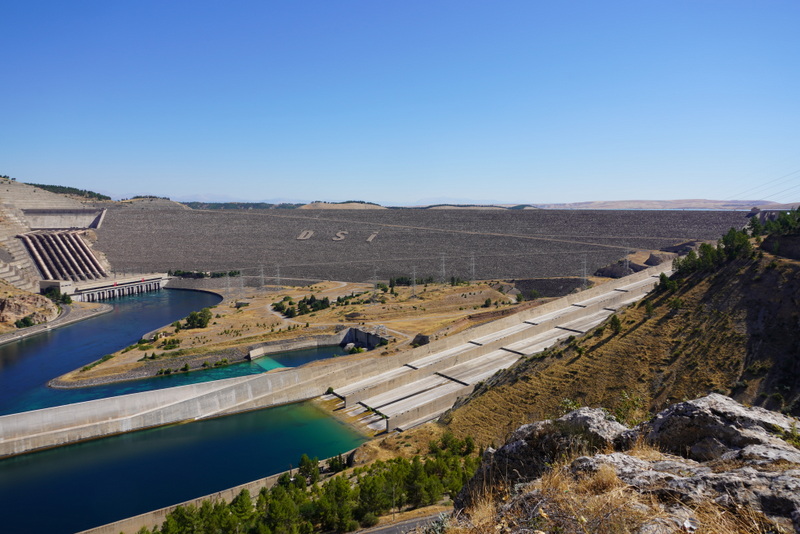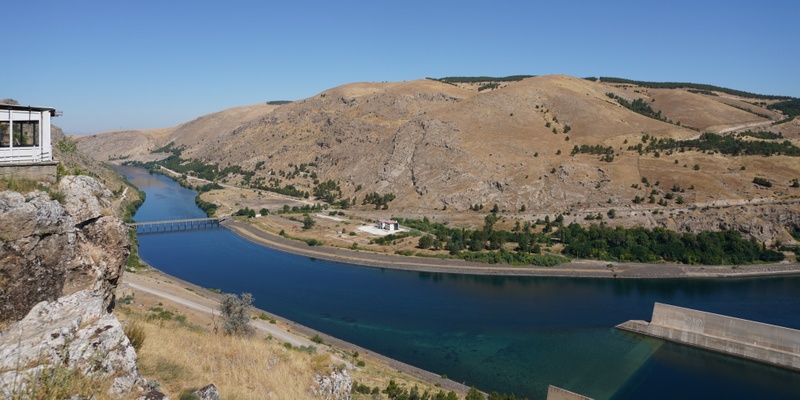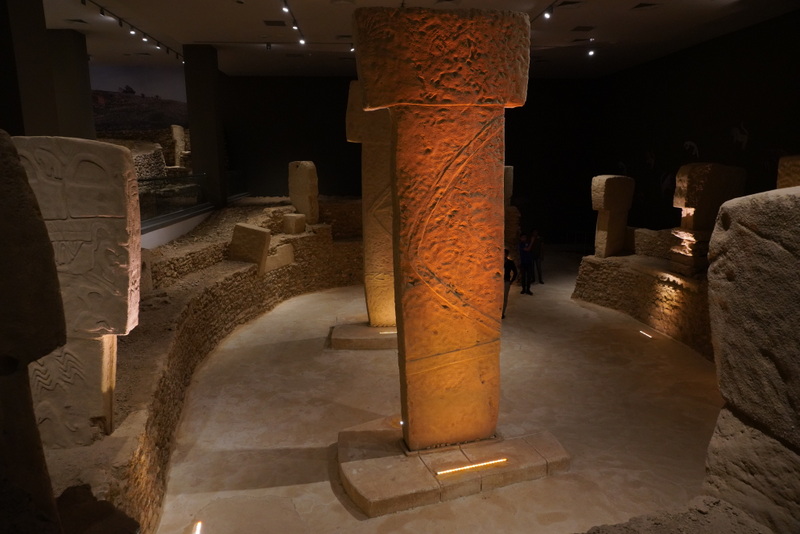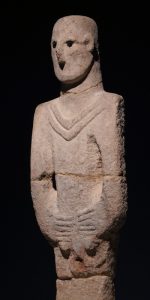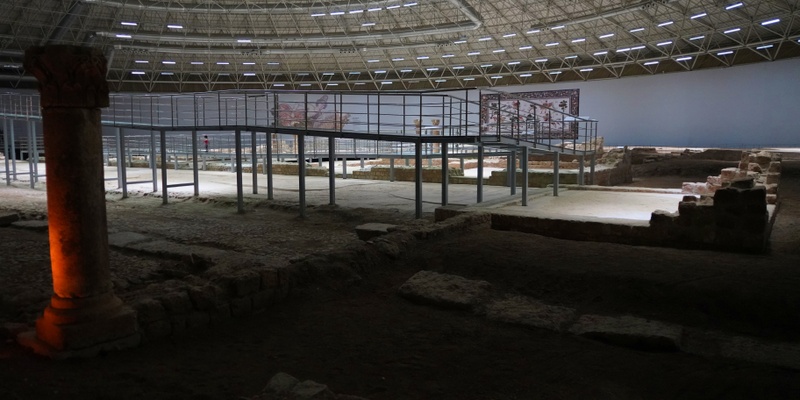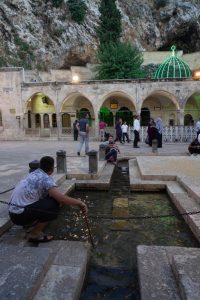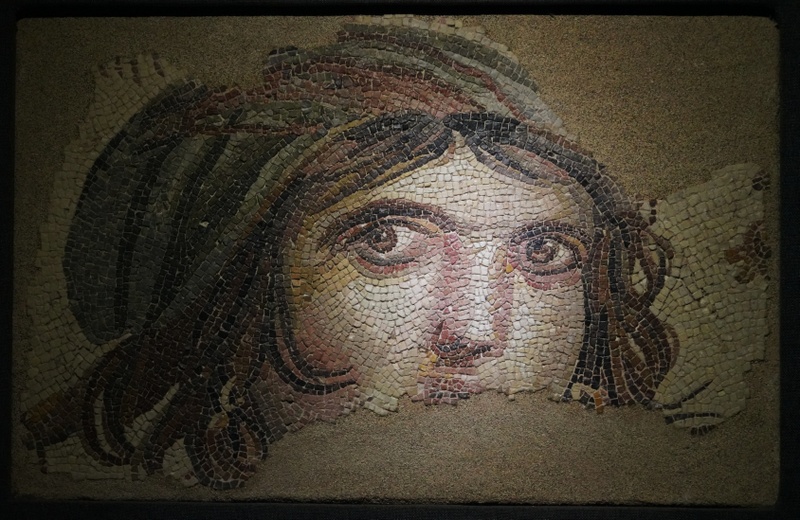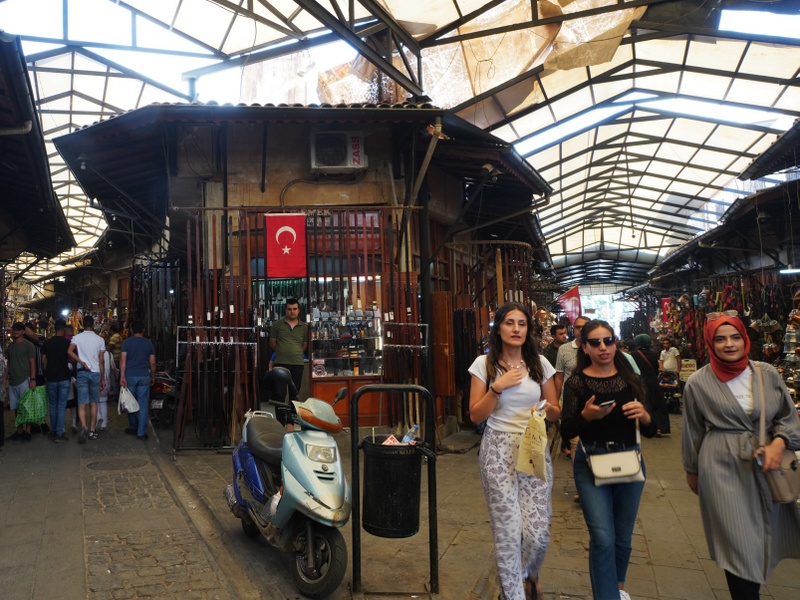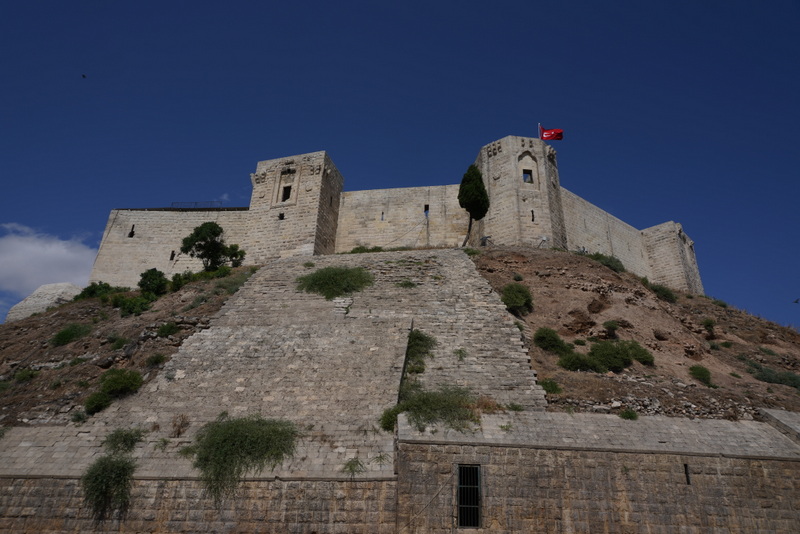Göbekli Tepe, Sanliurfa & Gaziantep July 14 – 15
Day 10 Friday: Adiyaman – Göbekli Tepe – Sanliurfa 150km
On the way to Sanliurfa, we stopped at the Atatürk Dam, a centrepiece of the 22 dams on the Euphrates and Tigris built under the SAP. The total cost of the dam project was about US$1.25 billion.
Construction began in 1983 and was completed in 1990. The dam, one of the world’s largest dams measuring 169m high and 1,820m long, and the hydroelectric power plant came into operation in 1992. The reservation created behind the dam is the third largest in the world.
Around 11 am, we arrived at Göbekli Tepe, a mind-blogging archaeological site. The Brief Synthesis from the World Heritage Centre Website sets out the importance of this 11000-13000-year-old site.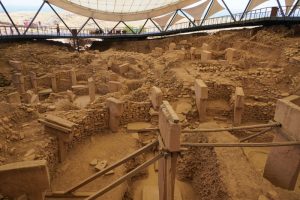
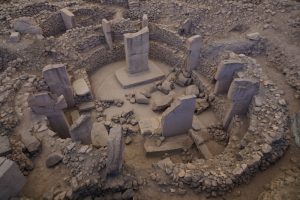 “Göbekli Tepe is located in Upper Mesopotamia, a region which saw the emergence of the most ancient farming communities in the world. Monumental structures, interpreted as monumental communal buildings (enclosures), were erected by groups of hunter-gatherers in the Pre-Pottery Neolithic period (10th – 9th millennia BC). The monuments were probably used in connection with social events and rituals and feature distinctive limestone T-shaped pillars, some of which are up to 5.50 meters tall. Some of the pillars, which are abstract depictions of the human form, also feature low reliefs of items of clothing, e.g. belts and loincloths, as well as high and low reliefs of wild animals. Recent excavation works have also identified the remains of non-monumental structures which appear to stem from domestic buildings” (whc.unesco.org)
“Göbekli Tepe is located in Upper Mesopotamia, a region which saw the emergence of the most ancient farming communities in the world. Monumental structures, interpreted as monumental communal buildings (enclosures), were erected by groups of hunter-gatherers in the Pre-Pottery Neolithic period (10th – 9th millennia BC). The monuments were probably used in connection with social events and rituals and feature distinctive limestone T-shaped pillars, some of which are up to 5.50 meters tall. Some of the pillars, which are abstract depictions of the human form, also feature low reliefs of items of clothing, e.g. belts and loincloths, as well as high and low reliefs of wild animals. Recent excavation works have also identified the remains of non-monumental structures which appear to stem from domestic buildings” (whc.unesco.org)
We first took a shuttle bus from the entrance to the site which is covered by a gigantic canopy. Visitors follow a boardwalk and go around the site to view several round-oval and rectangular megalithic structures.
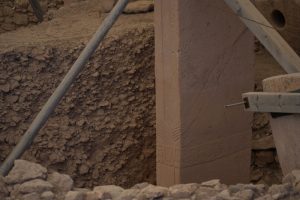 It is awesome to look down at the world’s oldest known megaliths. The site discoverer and excavator Klaus Schmidt believed that Göbekli Tepe was a stone-age mountain sanctuary.
It is awesome to look down at the world’s oldest known megaliths. The site discoverer and excavator Klaus Schmidt believed that Göbekli Tepe was a stone-age mountain sanctuary.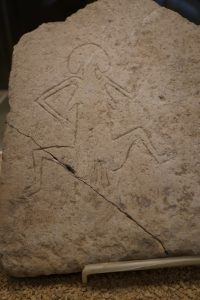
The tell included two phases of use of a social or ritual nature. During the first phase, belonging to the Pre-Pottery Neolithic A, circles of massive T-shaped stone pillars were erected. So far, some 200 pillars in about 20 circles are found. Each pillar has a height up to 6m and weighs up to 10 tons. They are fitted into sockets that were hewn out of bedrock.
In the second phase, belonging to the pre-Pottery Neolithic B, the erected pillars are smaller and stood in rectangular rooms with floors of polished lime.
The details of the structure’s functions remain a mystery. But around the beginning of the 8th millennium BCE, it lost its importance as a result of the advent of agriculture and animal husbandry that changed way of life in the area.
The site was abandoned after the Pre-Pottery Neolithic B. Each enclosure had been buried deliberately under 300 to 500 cubic metres of refuse thus creating a tell consisting mainly of small limestone fragments, stone vessels and tools. Many animal bones and even human, bones have been identified in the fill.
Partial excavation was carried out under the direction of Schmidt from 1996 until his death in 2014. Less than 5% of the site has been excavated. Given its outstanding universal cultural value, it was listed as a World Heritage Property in 2018.
I spent over two hours gazing at the pillars and layout of the structures/enclosures which represent one of the most important archaeological digs in the world. Is this the world’s first temple? This site may represent a major shift in our understanding of man’s early history.
Carved artistic images of men, birds and wild animals on the T-shaped pillars capture my imagination. These images give a snapshot of the way of life and belief of people living in Upper Mesopotamia about 11,500 years ago.
I left the site dumbfounded. What were the people like 12,000 years ago? How did they live? Why and how did they build the structures? How did they create all these with primitive tools? How many people had been involved? If they could build these colossal stone structures, they must already have attained certain level of sophistication. I must find out more about this site later.
We had a nice lunch with grilled chicken in Sabahattin’s favourite restaurant in town before checking in the El Ruha Hotel. We saw many security guards and police vehicles around. Later we discovered that Abdullah Gul, former President of Turkey was also staying in the hotel.
In the afternoon, we spent three hours in the Sanliurfa Archaeological & Mosaic Museum which was inaugurated in 2015. This new archaeological museum is well-designed with exhibits from the Palaeolithic (prehistoric period) to the modern time displayed chronologically on three floors. I paid 20 TL for an audio guide which gives me more information on the history and significance of the Upper Mesopotamian region and key exhibits.
There are four exhibition halls in the ground and upper floor showing Assyrian, Babylonian and Hittite artifacts.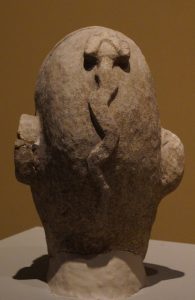
In the second and third halls, Neolithic, Chalcolithic and Bronze age items such as stone tools, terracotta ceramic tools, stamps, pithoi, necklaces, figurines, metallic tools, ornaments and idols are on display. One of the most important items is the Urfa Man, a 9500-year-old sculpture which is the oldest-known life-size human sculpture.
I find exhibits excavated from Sanliurfa, Göbekli Tepe, Harran, Nevali Cori (a village that is submerged under water now) and ruins found in the hydroelectric dam reservoirs of Ataturk, Dam, Birecik Dam and Karkamis Dam, most interesting. They have been well-preserved and carefully laid out with good illustrations.
In the ethnographic section, there are clothes, silver and bronze ornaments, handworks, doors with epitaph, calligraphy and hand written Korans.
Next to the archaeological museum is a new museum housing the Haleplibache (Aleppo Gardens) mosaics, part of a Roman Villa complex that was discovered during the construction of a theme park in 2006. A modern domed structure has been built to protect the invaluable mosaics. Highlights include detailed mosaics showing Amazon warrior queens, the life of Achilles and Orpheus.
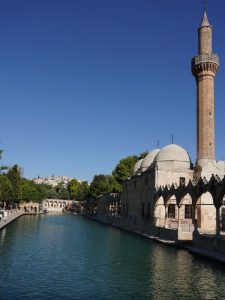
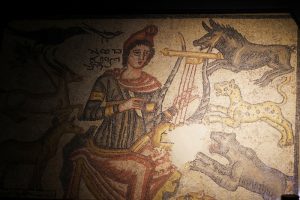 We met up with Sabahattin and Arda after 7 pm who took us to visit the Balıklı göl (or in English “Lake with fish”), a lovely and lively leafy park popular with the locals.
We met up with Sabahattin and Arda after 7 pm who took us to visit the Balıklı göl (or in English “Lake with fish”), a lovely and lively leafy park popular with the locals.
We stopped at the Pool of Sacred Fish in the courtyard of the Halil-ur-Rahman Mosque that dated back to 1211. Legends say that Prophet Abraham, (İbrahim in Turkish) was born and raised in Urfa. He was an enemy of the King Nimrod since he was the one to declare war on idolatry during his time. Nimrod ordered to burn him alive. When Abraham was thrown off a cliff into a fire, the flames became water and the burning wood transformed into carp. This pool is therefore considered sacred and the fish inside it holy. Locals love to feed the fish.
Nearby is a small but equally picturesque pool. Legends say that Abraham won the heart of King Nimrod’s daughter, Zeliha, who had also thrown herself off the cliff. The place where she landed, turned into a pool.
Our last stop was Abraham’s Cave, the birthplace of the prophet. Sabahattin said this cave was the oldest place of worship in the city. Today, a grand mosque has been built next to the cave. I watched pious pilgrims pray at this cave.
After a light supper, we went to bed early as we had a long day the following day.
Day 11 (July 15) Saturday: Sanliurfa – Gaziantep 150km – Ankara 700km
Logistics
Today was our last touring day. Kylie decided to take a flight to Hong Kong in the early hours on July 16. A 17-seater minibus had come from Van to take Sabahattin to Ankara to meet a new tour group of 11 Iranians. Arda would return to Van with his uncle in the vehicle that we had been using since July 5.
I decided to take a free ride with Sabahattin to Ankara and then travel to Konya by train. As it would be too troublesome and costly to spend a night at the Istanbul airport hotel, I would fly from Konya to Istanbul at 4:45 am on July 20 and catch a connecting flight to Moscow at 11 am. It sounds a bit complicated but nothing is too difficult for me. At the end, things turned out perfectly.
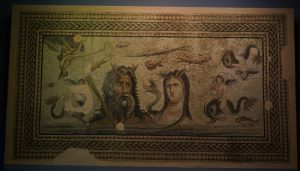 We set off at 8:30 am and drove 150km to Gaziantep, Turkey’s capital of pistachio production. We saw millions of pistachios trees, extensive olive groves and vineyards along the highway. The highlight of Gaziantep is the Zeugma Mosaic Museum.
We set off at 8:30 am and drove 150km to Gaziantep, Turkey’s capital of pistachio production. We saw millions of pistachios trees, extensive olive groves and vineyards along the highway. The highlight of Gaziantep is the Zeugma Mosaic Museum.
Zeugma originally founded in 300 BC as a Greek settlement by Seleucus I Nicator, one of the generals of Alexander the Great. Zeugma, meaning “bridge” or “crossing” in Greek, referred to the twin cities on opposite banks of the Euphrates. The population at the height of the city was about 80,000. In 64 BC, the city was conquered and ruled by the Roman Empire. It prospered under the Romans and grew in importance owing to its geo-strategic location along the Silk Road: it connected Antioch to China via a bridge of pontoons across the Euphrates.
In 256 AD, Zeugma was invaded and destroyed by the Sassanid king, Shapur I. the city was further devastated by a serious earthquake and never regained its former prominence. The city was abandoned as a result of ongoing Arab raids and forgotten. In the 10th and 12th centuries, a small group of Abbasid group settled in Zeugma. In the 17th century, a village called Belkis was founded.
The mosaics and treasures of the ancient city of Zeugma remained relatively unknown till 2000 when artifacts appeared in museums and when plans for new dams on the Euphrates would cause flooding of the area.
Feverish international efforts have been made in haste to save the treasures. The ancient city has now submerged under the flood waters of the Atatürk Dam. A large number of the mosaics remain covered and teams of researchers continue to work on the project. I paid 20TL for an audio guide and thoroughly enjoyed the exhibits.
Opened in September 2011, this museum has replaced Tunisia’s Bardo National Museum as the world’s biggest mosaic museum. At present it has 1450m2 of mosaics, 140m2 of frescoes, 4 Roman fountains, 20 columns, 4 limestone sculptures, bronze statue of Mars, grave steles and sarcophagi. When an additional 1000m2 of mosaics are restored, it will boast 2500m2 of mosaics on display.
These mosaics are about 2000 years old and unique in design, colour and perfection. They are a superb example of the skill and artistry of the ancient craftsmen.
The most famous piece in the museum is undoubtedly the iconic Gypsy Girl mosaic. Twelve missing fragments were returned to the museum from the USA in 2018. It is displayed in a special small dark room with professional lighting which brings out her beauty as well as perplexity in her gaze. What was she looking at and thinking? I find the girl as intricate and intriguing as Mona Lisa.
Other famous ones include the Fertility Goddess Demeter, Akratos, Okeanos, Euphrates, Tethys, Perseus-Andromeda, Herakles, Helios, Mars Statue, Dionysus, Telete, Skyrtos, Ariadne, Eros, Psykhe, Metiochus, Parthenope.
In the second building, I saw a unique collection of Late Antiquity church mosaics originating from the vicinity of Gaziantep.
By the time we left the museum, it was 1 pm. It’s time to taste the famous local cuisine. Food in Gaziantep is different from the cuisine in other parts of Turkey because of the influence of Ogus Turks and Aleppo in neighbouring Syria. The difference is visible in its rice meals, soups, kebabs, meatballs, etc. Its kebab varieties include kiyma kebab or minced meat, kusbasi kebab, simit kebab, vegetable kebab with aubergine, onion etc. Some of them are fearsomely hot. Its desserts are a must try for tourists.
We had the best lamb kebab of this trip. We also tried three types of pastry baklava with delicious crushed pistachios.
After lunch, we spent over an hour strolling in the atmospheric old town which is one of the oldest continuously inhabited cities in the world.
I love narrow alleys and bazaars. The local shops are interesting. Many shops are selling nuts. There are countless small workshops that sell “Yemeni” sandals and other leatherwear, copperware and handicrafts. I had a wonderful time strolling around and soaking in the atmosphere.
Before leaving the old town, we visited the castle perching on the hill top. The castle has now been turned into a museum with elaborate displays and models on conflicts and wars taking place in the area. As we were in hurry, we had no time to look at the exhibits and read the interpretations.
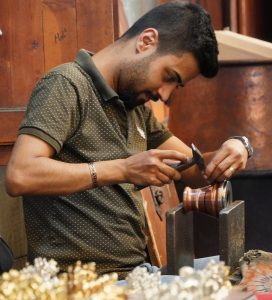 We only had time for a few photos when we finally reached the top of the castle. I had excellent panoramic views of the city.
We only had time for a few photos when we finally reached the top of the castle. I had excellent panoramic views of the city.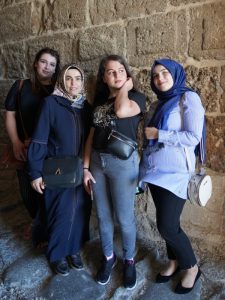
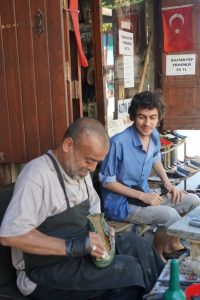
At 4:30pm, we said good-bye to Kylie at the airport. Next moment, the driver began his 700-km drive to Ankara. We only had two brief stops and finally arrived at Q Hotel in Ankara at 1 am. I feel sorry for the driver. He must be exhausted!



